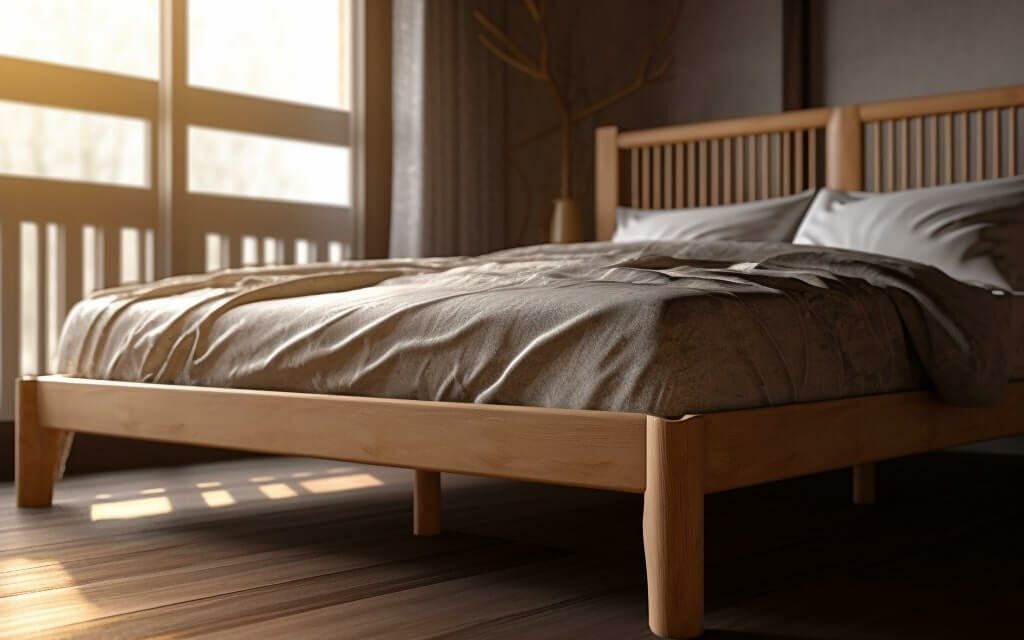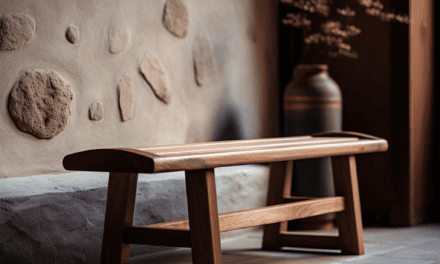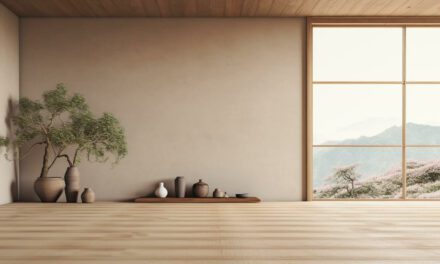I’ve experienced the transformative power of Japandi bed frames in the way they can bring calm and tranquility to any bedroom – blending Japanese minimalism with Scandinavian comfort.
In this article, I’ll explore the characteristics of Japandi bed frames, the styles, colors and materials, what to look for when choosing your own, and much more.
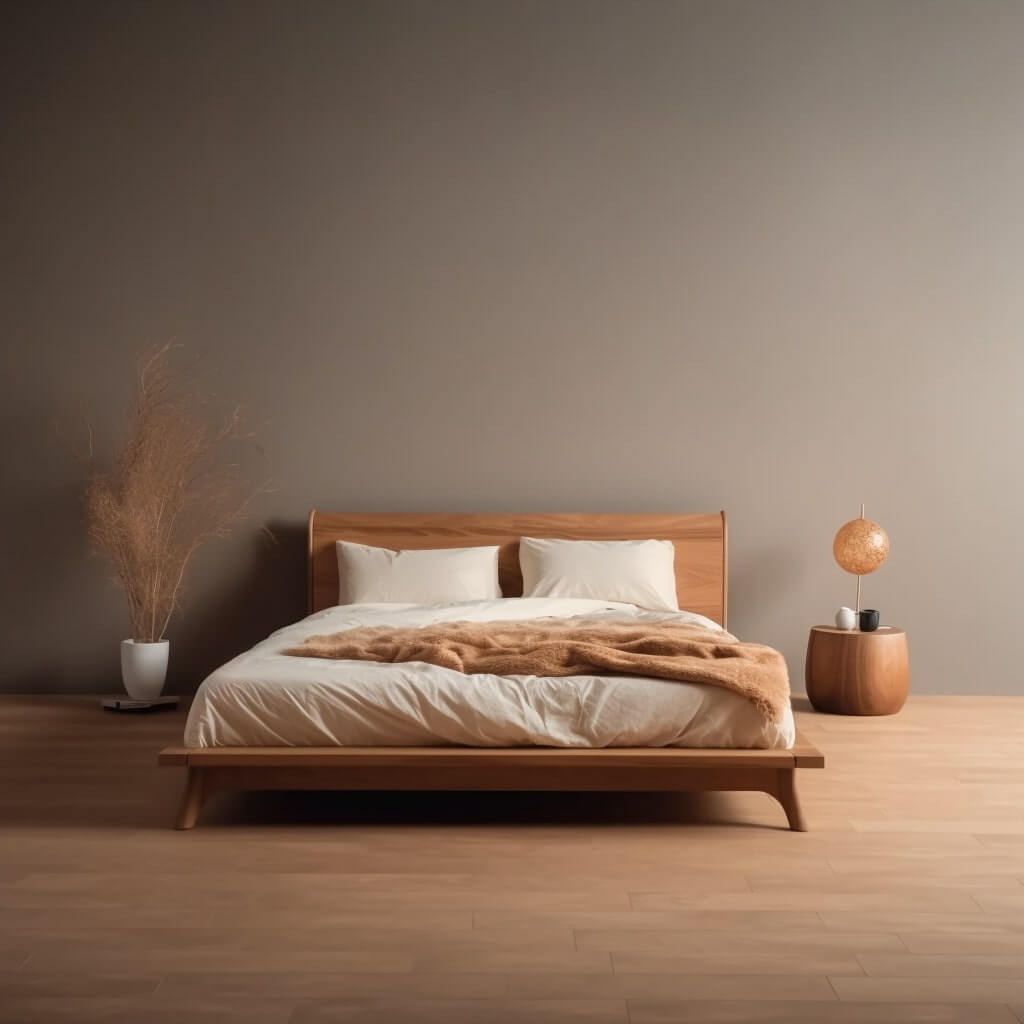
The Art of Japandi Bed Frames
As I ventured into the world of Japandi design, I realized it was a universe of its own, an exquisite representation of the union between two distinct cultures.
And nowhere was this more apparent than in the creation of Japandi bed frames.
Craftsmanship in Japandi Bed Frames
When I talk about Japandi bed frames, the first thing that comes to mind is the masterful craftsmanship.
This is not mass-produced, run-of-the-mill furniture; each Japandi bed frame is a testament to the skilled artisans who pour their dedication and precision into every piece.
There’s a strong focus on detail and quality – from the careful selection of wood to the intricate yet minimalist detailing, every aspect echoes the ethos of Japandi style: simplicity, functionality, and tranquility.
It’s inspiring to see how every groove, every joint, every curve is crafted with such meticulous attention, ensuring that the bed frame is not just aesthetically pleasing, but also built to last.
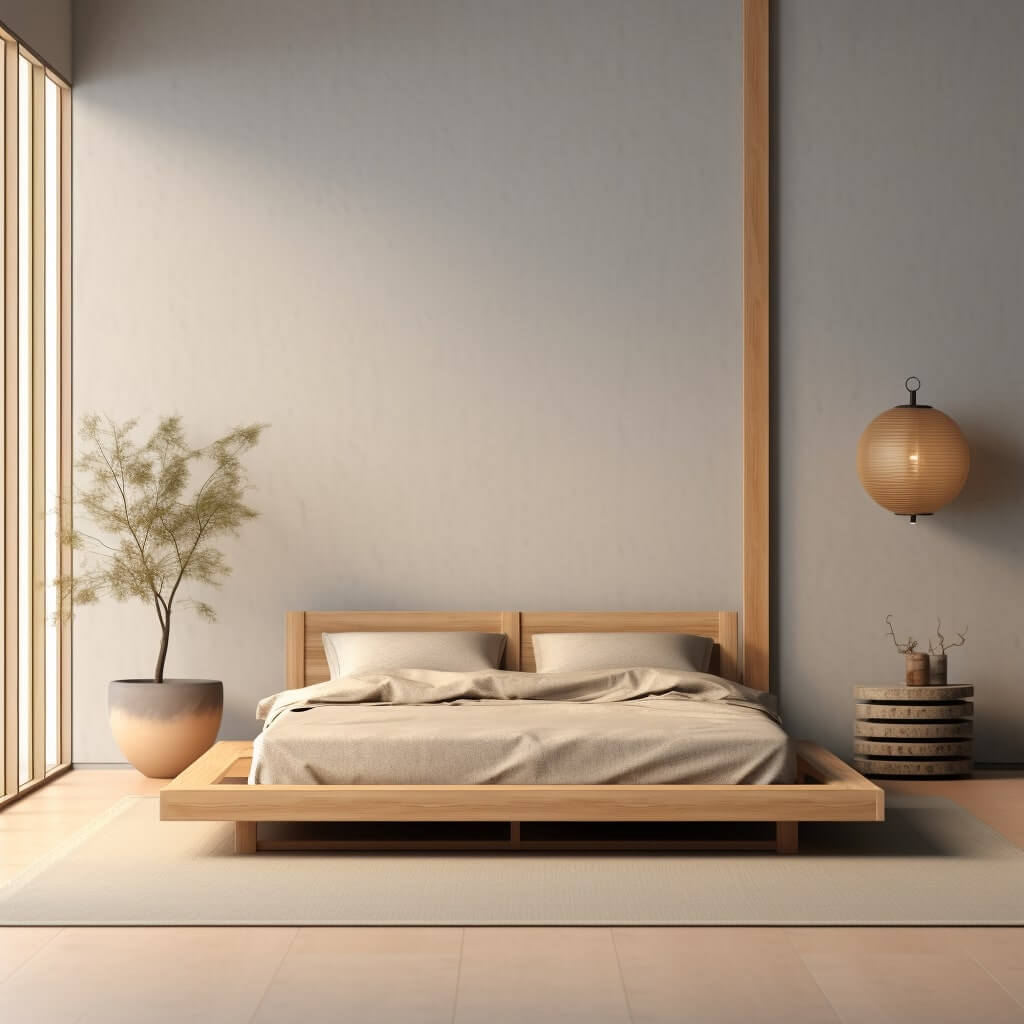
Features of Japandi Bed Frames
What sets Japandi bed frames apart are their distinctive features.
The design is minimalistic, yet warm, reflecting the Scandinavian love for functionality and the Japanese respect for minimalism.
The frames are usually low to the ground, echoing traditional Japanese furniture and symbolizing a close connection to the earth.
The bed frames also perfectly blend the sleek, clean lines characteristic of both Japanese and Scandinavian design.
There’s a sense of harmony and balance in the way the frame supports the mattress, ensuring both comfort and style.
Every time I gaze at my own Japandi bed frame, I can’t help but admire the thought and care that went into each feature.

Natural Materials in Japandi Furniture
One key aspect of Japandi bed frames is the use of natural materials.
You’ll find frames crafted from different types of wood – from the light, airy tones of ash and beech favored by Scandinavian design, to the richer, darker hues of walnut or oak found in Japanese interior design.
These natural materials bring an element of the outdoors into the bedroom, creating a serene and calming environment.

Japandi Bed Frame Colors and Textures
Lastly, let’s talk about colors and textures.
Japandi bed frames typically feature muted, earthy color palettes that evoke a sense of peace and calm.
Think gentle whites, soft greys, and warm, light wood tones that blend seamlessly with any decor.
Textures play a crucial role too, adding depth and interest to the minimalistic design.
The smooth surface of a well-polished wooden frame, or the subtle grain patterns in the wood, add a tactile element that enhances the overall aesthetic experience.
In essence, a Japandi bed frame is more than just a piece of furniture; it’s a work of art that embodies the harmony, balance, and tranquil beauty of Japandi design.
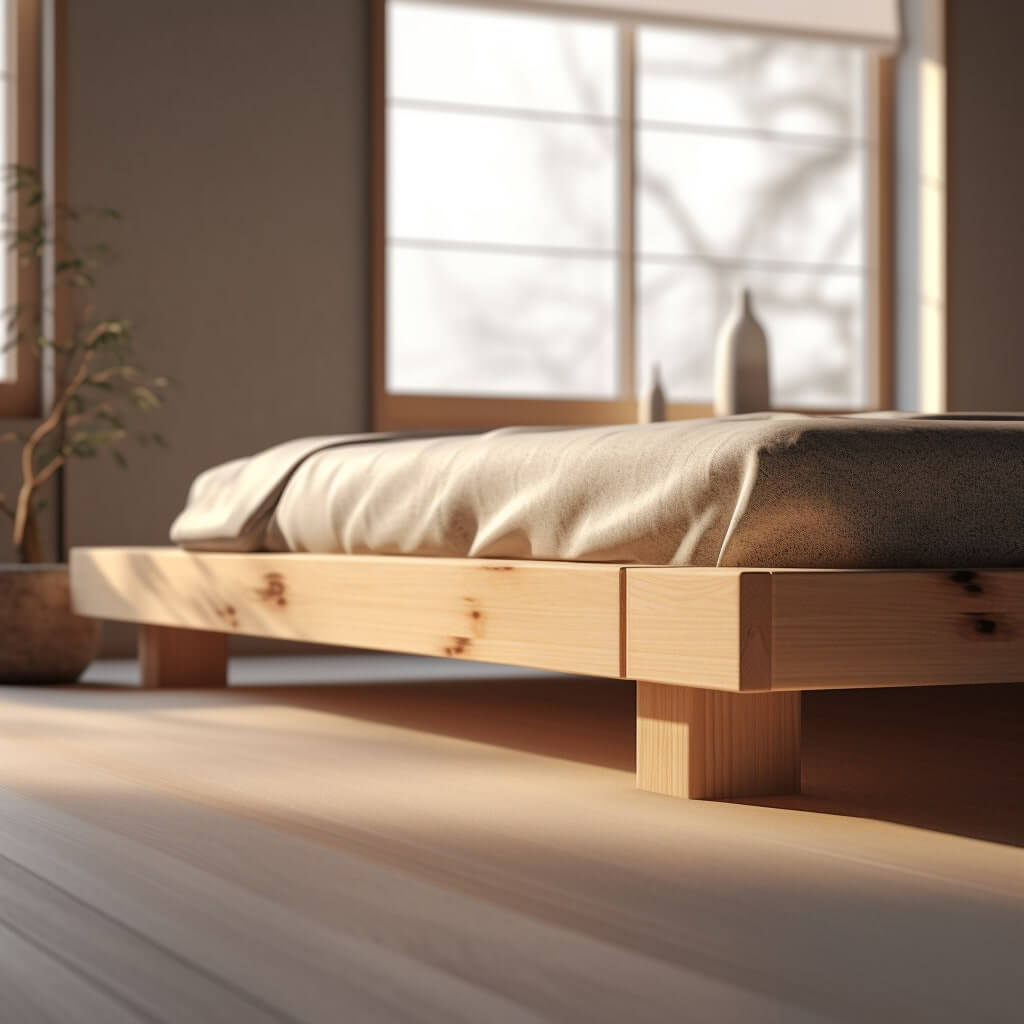
The Aesthetics of Japandi Bed Frames
The beauty of a Japandi bed frame isn’t merely skin-deep.
Beyond its physical attributes lies a deeper aesthetic allure, a certain emotional resonance that elevates it from being just a piece of furniture to becoming a vital component of one’s sanctuary of rest and relaxation.
Feelings Evoked by Japandi Bed Frames
Every time I enter my bedroom and my eyes land on my Japandi bed frame, a profound sense of serenity envelops me.
There’s something about its clean lines, the simple yet elegant form, the unassuming quality of its craftsmanship that radiates peace and tranquility.
It seems to whisper the values of minimalism and mindfulness, gently urging me to shed the stresses of the day and immerse myself in the present moment.
A Japandi bed frame doesn’t merely serve as a resting place—it also cultivates a soothing ambiance that facilitates restful sleep and calm reflection.
This feeling of tranquility is deeply ingrained in the Japandi philosophy, which prioritizes harmony, balance, and a profound respect for the beauty of simplicity.
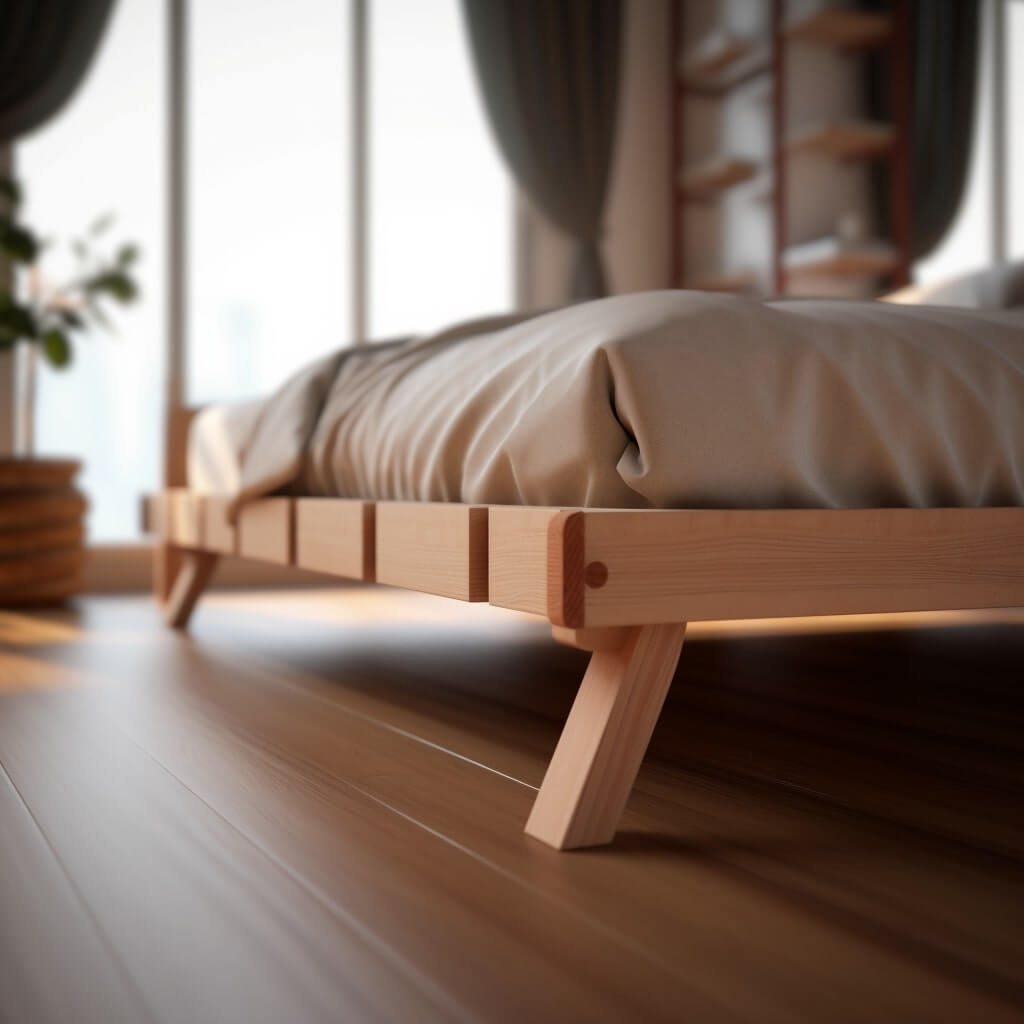
How Japandi Bed Frames Enhance Bedroom Aesthetics
A Japandi bed frame is more than just a place to sleep—it’s an aesthetic focal point that sets the tone for the entire bedroom.
It’s a masterpiece that manages to straddle the fine line between stark simplicity and cozy warmth.
The bed frame’s minimalist design, enhanced by natural materials and neutral color palettes, introduces an element of understated elegance to the bedroom.
It makes a statement without shouting, adding character to the room while maintaining a harmonious relationship with other furniture pieces.
Moreover, the use of light woods and soft colors in the bed frame can make a room seem more spacious and airy.
The frame’s low-to-the-ground design also contributes to this sense of spaciousness, creating a relaxing, uncluttered environment conducive to rest and rejuvenation.
Indeed, introducing a Japandi bed frame into a bedroom is like adding a breath of fresh air. It embodies an aesthetic that is both grounding and liberating, a nod to the beauty of simplicity and the warmth of natural materials that can transform any bedroom into a tranquil retreat.
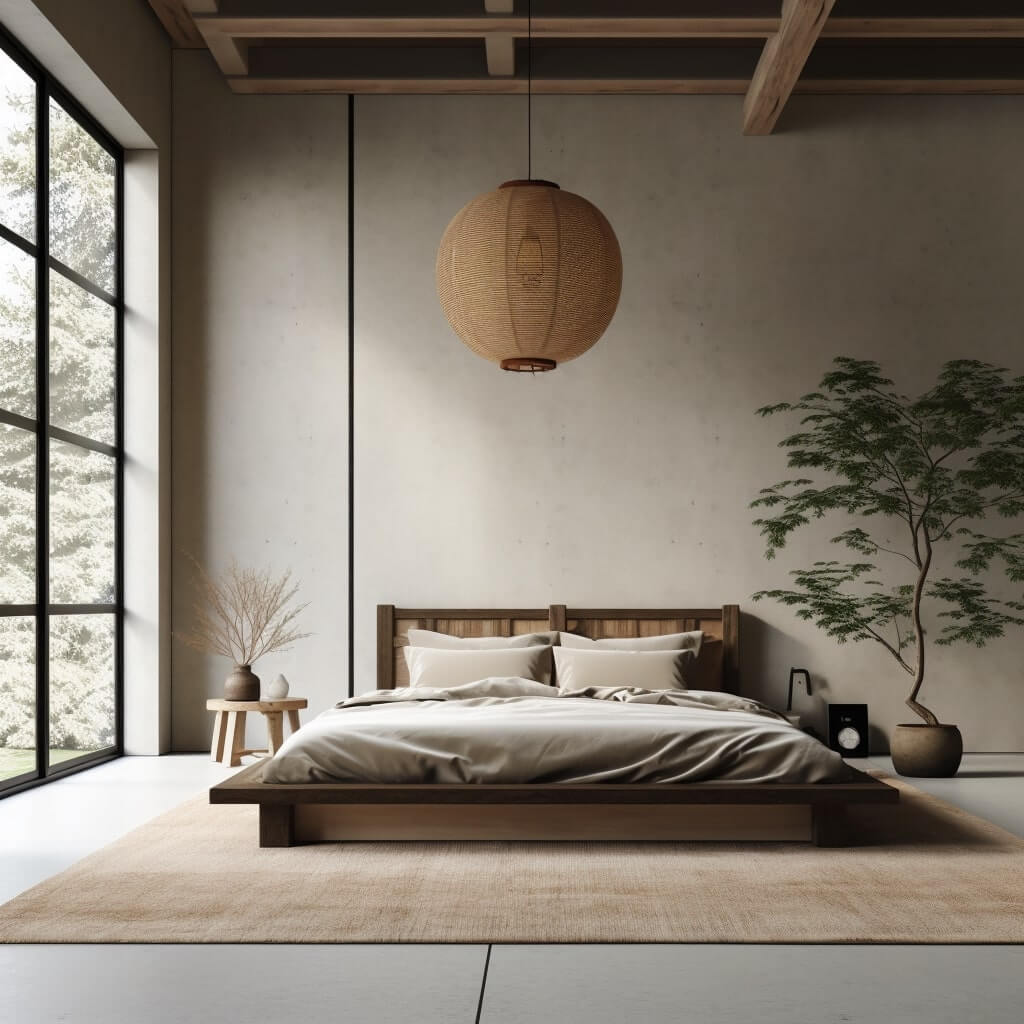
How to Choose Your Japandi Bed Frame
Selecting the right Japandi bed frame can be a delightful journey of discovery, where each choice you make contributes to creating your personal sanctuary of peace and tranquility.
Here, I’ll share some important factors that helped me make my decision when choosing the perfect Japandi bed frame.
Size and Dimension
When it comes to selecting the right size and dimensions for your bed frame, practicality is key.
You need to consider the size of your bedroom and the amount of space you’re willing to allocate for your bed.
Japandi aesthetics embrace spaciousness, so it’s important to ensure that your bed frame fits well within your room without making it feel cramped.
In my own journey, I found that opting for a low-profile, king-sized bed frame worked perfectly in creating a sense of open space in my master bedroom.
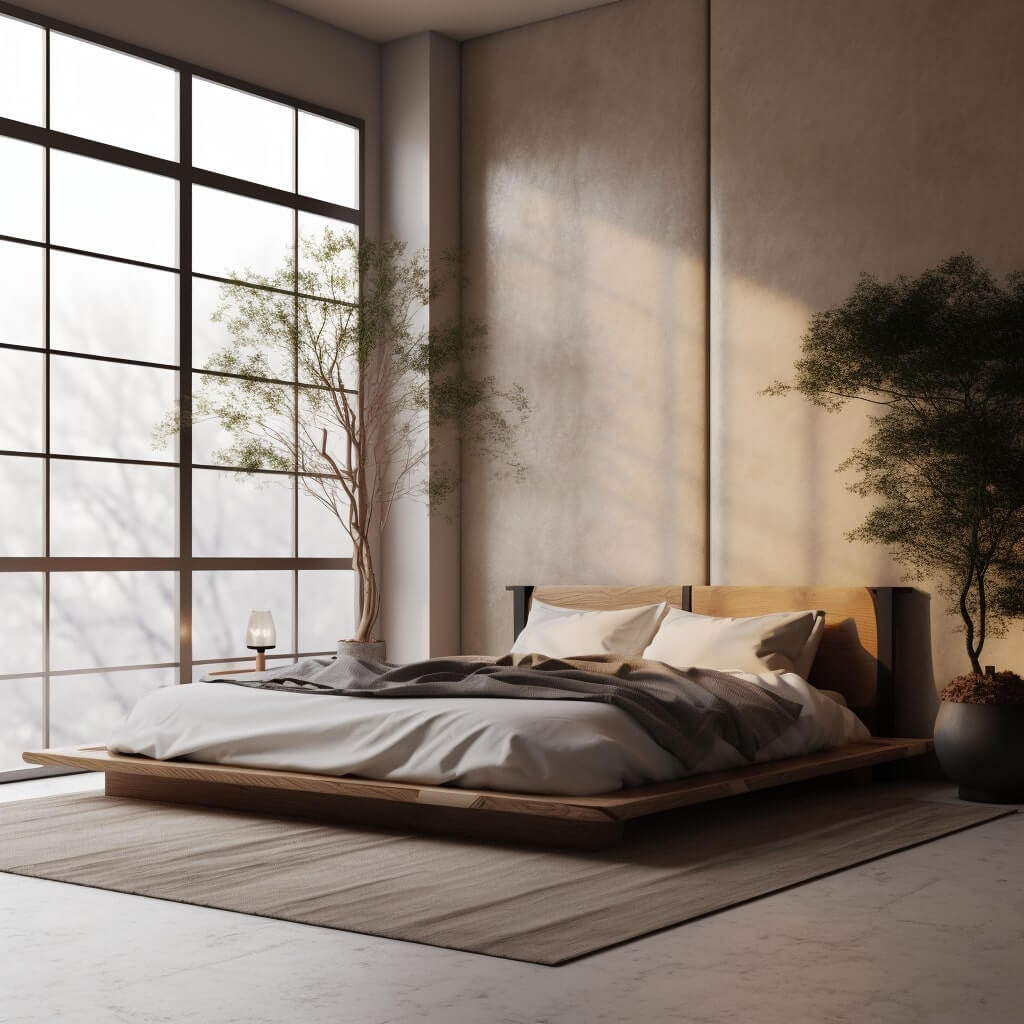
Material for Japandi Bed Frames
Next comes the choice of material.
As a lover of natural elements, I was drawn to the use of solid wood in Japandi bed frames.
This material not only adds warmth and character to the bedroom but also provides sturdiness and durability.
You can choose between lighter woods such as ash or beech, which are typical of Scandinavian design, or darker ones like walnut or oak, which are favored in Japanese aesthetics.
It all depends on your personal preference and the kind of atmosphere you want to create in your bedroom.
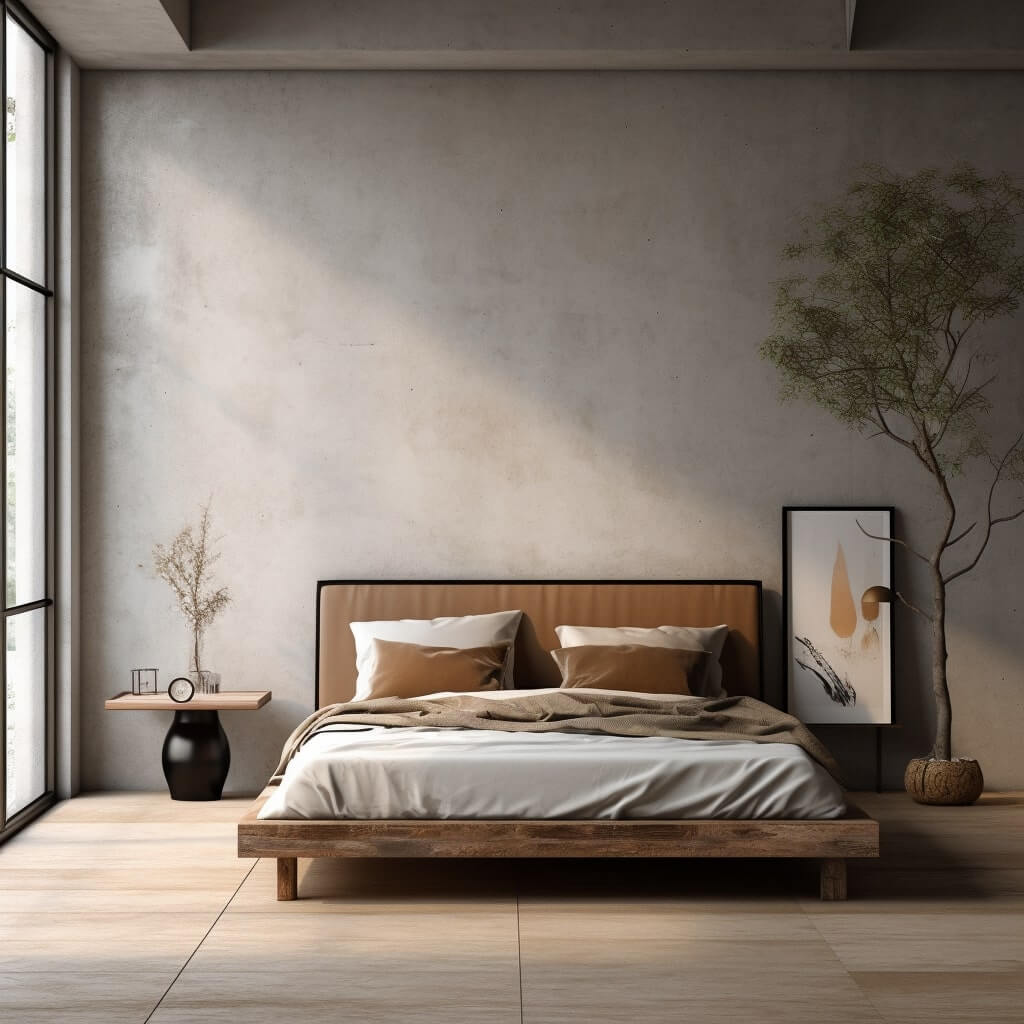
Color for Your Japandi Bed Frame
The color of your bed frame is another crucial factor. In keeping with the Japandi philosophy, I decided to go with a muted, earthy color palette.
I opted for a soft grey that blended seamlessly with the rest of my décor, creating a sense of calm and tranquility.
Remember, the goal is to choose a color that enhances the natural beauty of the wood and complements the overall aesthetic of your bedroom.
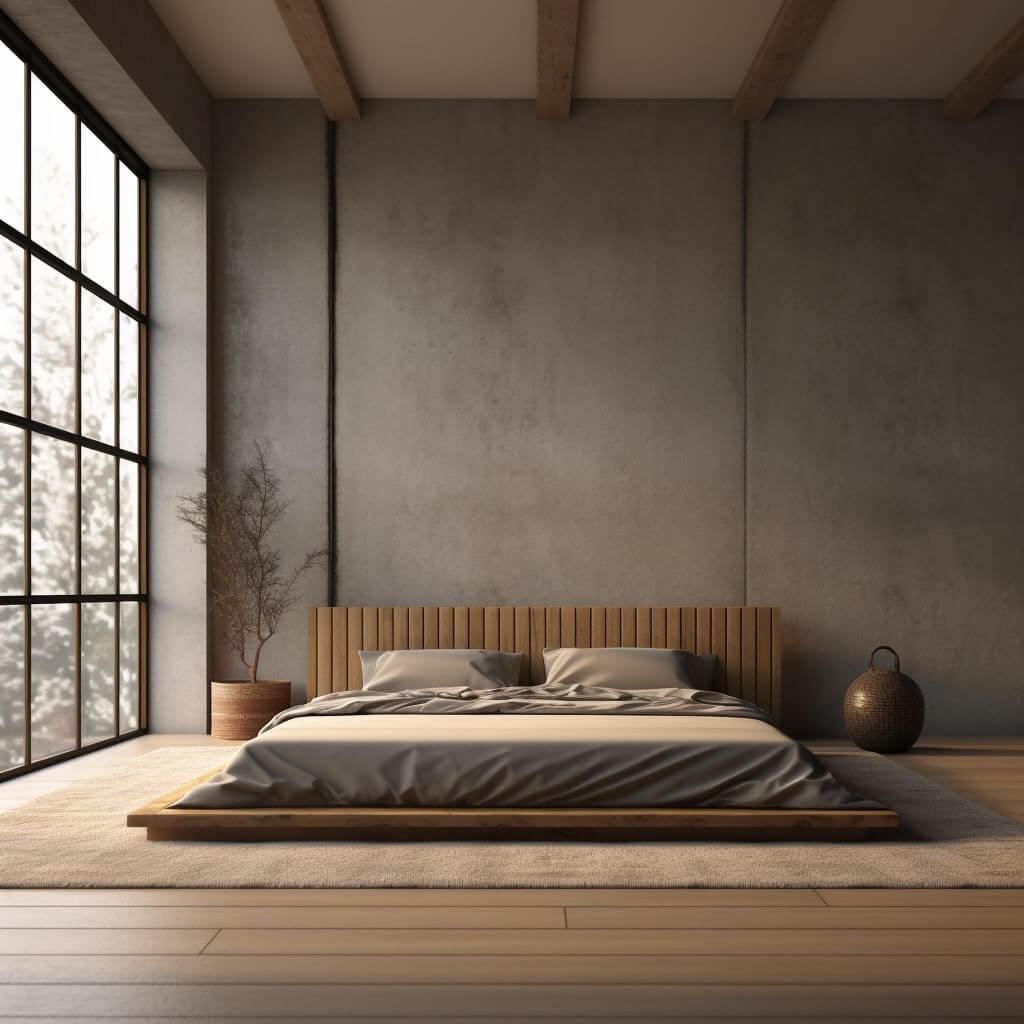
The Importance of Craftsmanship in Your Choice
Finally, never underestimate the importance of craftsmanship when choosing your Japandi bed frame.
Look for signs of careful, quality craftsmanship such as sturdy construction, smooth finishes, and meticulous detailing.
It was the exceptional craftsmanship that drew me to my own Japandi bed frame – every curve, every joint speaks volumes about the artisan’s skill and dedication.
Choosing your Japandi bed frame is about finding that perfect balance between functionality and aesthetics, ensuring that it not only provides a comfortable place to rest but also contributes to the overall harmony and tranquility of your bedroom.
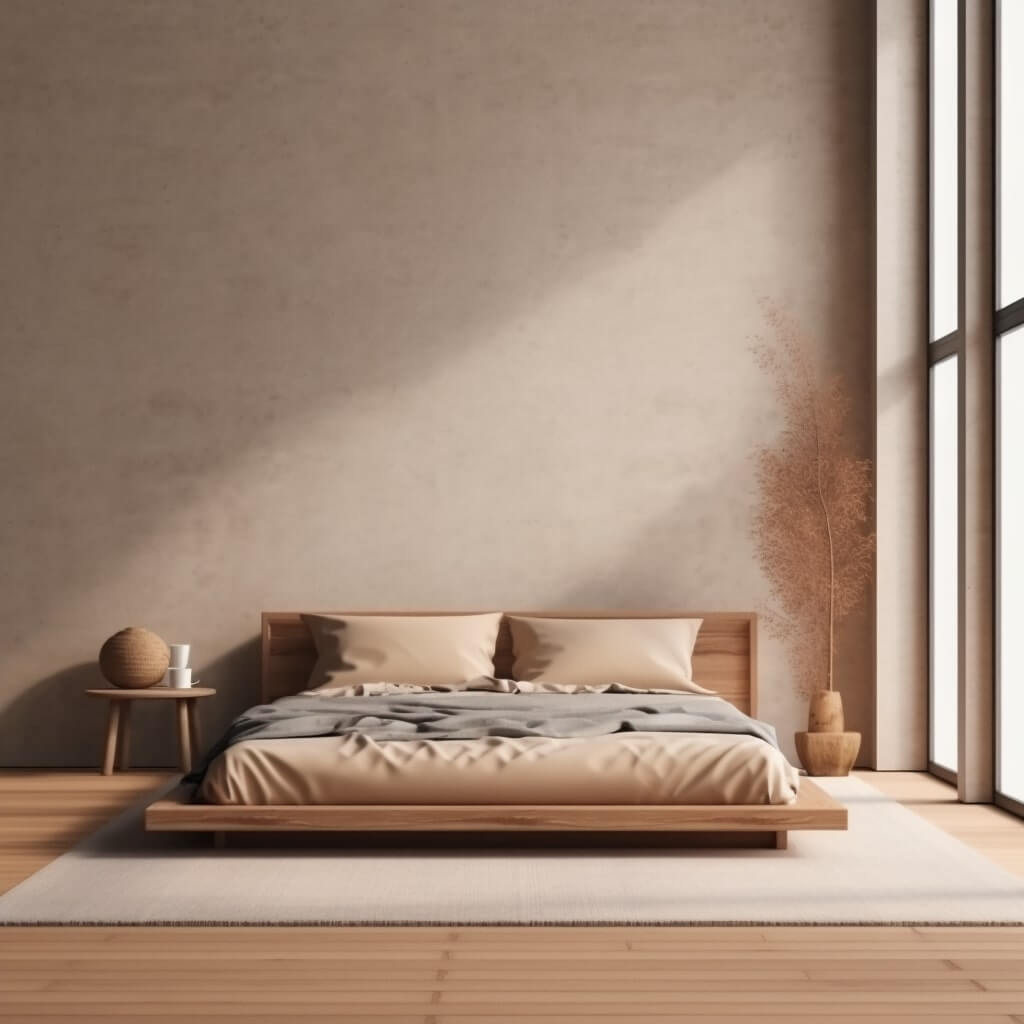
Caring for Your Japandi Bed Frame
Just as a Japandi bed frame offers tranquility and comfort, it, too, deserves to be cared for and nurtured.
The essence of Japandi philosophy extends beyond the initial selection of the piece – it encompasses the respect and care given to it over time.
Maintenance Tips for Japandi Furniture
The first step in maintaining your Japandi bed frame is regular dusting. Due to the use of natural materials, dust particles can accumulate and affect the wood’s finish over time.
I make it a point to dust my bed frame once a week with a soft, dry cloth, ensuring that I reach every corner and crevice.
Another tip that I found helpful is to avoid harsh cleaning agents.
These can strip the wood of its natural oils and impact its longevity. Instead, for deeper cleaning, I use a mild soap solution, making sure to thoroughly dry the frame afterward to prevent moisture damage.
Long-term Care for Your Japandi Bed Frame
As for long-term care, treating the wood with a quality furniture oil or wax once or twice a year can help maintain its luster and prevent it from drying out.
Just make sure to choose a product that’s suitable for the type of wood your bed frame is made from.
Also, it’s wise to keep the bed frame away from direct sunlight or heat sources, as these can cause the wood to fade or warp over time.
In the end, caring for your Japandi bed frame is an extension of the philosophy it represents: mindfulness and respect for the materials and craftsmanship.
With regular care and attention, your Japandi bed frame will continue to be a peaceful and inviting focal point in your bedroom for years to come.
Where to Buy a Japandi Bed Frame
Finding the perfect Japandi bed frame might seem like a daunting task, but there are plenty of resources available to help you find the piece that resonates with you the most.
Whether you’re comfortable with online shopping or prefer the tactile experience of a physical store, there’s an option that suits your needs.
Online Marketplaces for Japandi Furniture
Online marketplaces have been a treasure trove for me when searching for Japandi furniture.
Websites like Etsy and Amazon, or specialized online furniture stores, often have a wide range of options, catering to different styles and budgets.
Shopping online also allows you to easily compare prices, read customer reviews, and get the bed frame delivered straight to your doorstep.
The only drawback is the inability to see and touch the item in person before purchasing.
Retail Stores Specializing in Japandi Style
If you’re like me and enjoy the experience of physically exploring furniture, there are many retail stores that specialize in Japandi style.
These stores allow you to interact with the furniture, examine the craftsmanship, and even try out the bed frame for comfort.
This hands-on approach ensures that you’re completely satisfied with your choice.
Custom-made Japandi Bed Frames
For those who value uniqueness and personal touch, opting for a custom-made Japandi bed frame could be the way to go.
The main advantage here is the ability to have a bed frame that fits your specific needs and tastes.
However, it’s important to remember that custom-made pieces can be more expensive and may require a longer waiting time.
In my journey of finding the perfect Japandi bed frame, I realized that the choice of where to buy from is just as personal as the style itself. It’s all about finding the balance between comfort, quality, and price that works best for you.
FAQs
What material is used in Japandi style?
Japandi style primarily uses natural, sustainable materials. Wood is the most common, with both light tones like ash and beech, popular in Scandinavian design, and darker tones like walnut and oak, favored in Japanese aesthetics, being used in furniture including bed frames.
What is Japandi style about?
Japandi style is a fusion of Japanese and Scandinavian design philosophies. It focuses on minimalistic designs, functionality, and the use of natural elements. This style values simplicity, understated elegance, and harmonious interiors that evoke tranquility and comfort.
What is a Japanned bed?
A “Japanned” bed refers to a bed frame that has undergone a finishing process called “japanning”, which involves coating the furniture with a hard black varnish. This term, however, is not directly related to the Japandi style or Japanese design.
Why do Japanese like low beds?
Japanese culture prefers low beds due to their minimalist design principles and the influence of the traditional tatami mat sleeping arrangements. Low beds are seen as more harmonious with nature, promoting relaxation and grounding, and they also contribute to the perception of more spacious interiors.
What is a Fuji bed?
A Fuji bed is a low, platform-style bed that takes its name from Japan’s iconic Mount Fuji. Just as the mountain features clean, streamlined slopes, a Fuji bed embodies simplicity and harmony with clean lines, often made of natural wood and paired with a tatami mat or futon.
What are platform beds called?
Platform beds are commonly known as “platform frames” or “platform bed frames”. In a Japanese context, these beds may be referred to as “tatami frames” or “tatami beds”, due to the traditional practice of placing a futon mattress on a tatami mat platform.
What is a Japanese tatami bed?
A Japanese tatami bed, or tatami platform bed, is a low bed frame typically made from natural wood. It is designed to hold a futon mattress and a tatami mat, a traditional Japanese mat made from rice straw. This design allows for a minimalist, grounding sleep experience.







